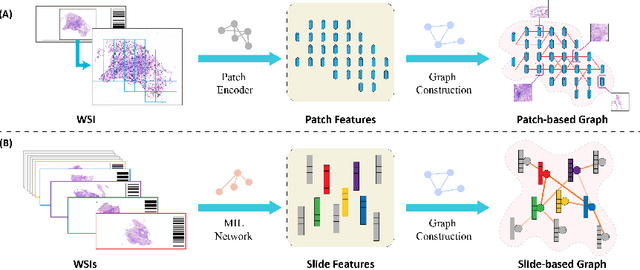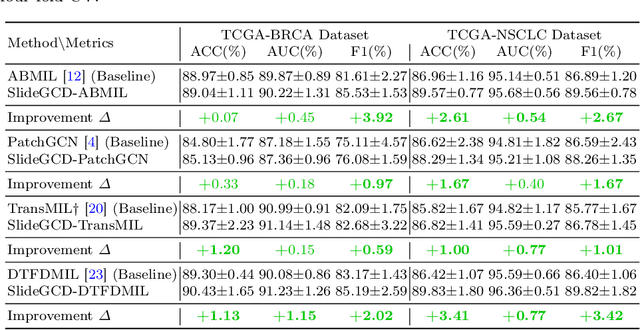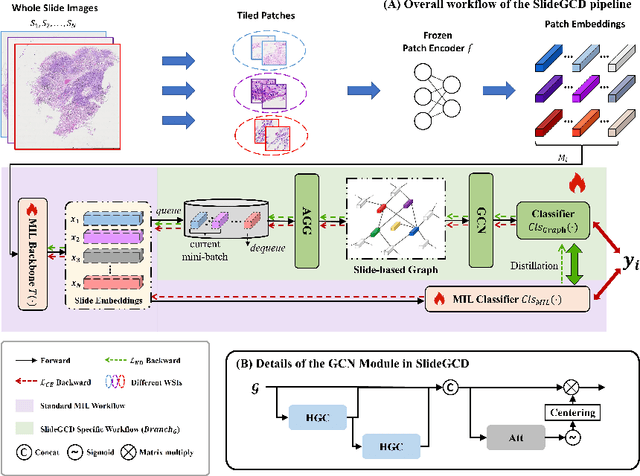Tong Shu
Slide-based Graph Collaborative Training for Histopathology Whole Slide Image Analysis
Oct 14, 2024Abstract:The development of computational pathology lies in the consensus that pathological characteristics of tumors are significant guidance for cancer diagnostics. Most existing research focuses on the inner-contextual information within each WSI yet ignores the possible inter-correlations between slides. As the development of tumors is a continuous process involving a series of histological, morphological, and genetic changes that accumulate over time, the similarities and differences between WSIs across various stages, grades, locations and patients should potentially contribute to the representation of WSIs and deserve to be taken into account in WSI modeling. To verify the advancement of introducing the slide inter-correlations into the representation learning of WSIs, we proposed a generic WSI analysis pipeline SlideGCD that can be adapted to any existing Multiple Instance Learning (MIL) frameworks and improve their performance. With the new paradigm, the prior knowledge of cancer development can participate in the end-to-end workflow, which concurrently initializes and refines the slide representation, as a guide for message passing in the slide-based graph. Extensive comparisons and experiments are conducted to validate the effectiveness and robustness of the proposed pipeline across 4 different tasks, including cancer subtyping, cancer staging, survival prediction, and gene mutation prediction, with 7 representative SOTA WSI analysis frameworks as backbones.
SlideGCD: Slide-based Graph Collaborative Training with Knowledge Distillation for Whole Slide Image Classification
Jul 12, 2024



Abstract:Existing WSI analysis methods lie on the consensus that histopathological characteristics of tumors are significant guidance for cancer diagnostics. Particularly, as the evolution of cancers is a continuous process, the correlations and differences across various stages, anatomical locations and patients should be taken into account. However, recent research mainly focuses on the inner-contextual information in a single WSI, ignoring the correlations between slides. To verify whether introducing the slide inter-correlations can bring improvements to WSI representation learning, we propose a generic WSI analysis pipeline SlideGCD that considers the existing multi-instance learning (MIL) methods as the backbone and forge the WSI classification task as a node classification problem. More specifically, SlideGCD declares a node buffer that stores previous slide embeddings for subsequent extensive slide-based graph construction and conducts graph learning to explore the inter-correlations implied in the slide-based graph. Moreover, we frame the MIL classifier and graph learning into two parallel workflows and deploy the knowledge distillation to transfer the differentiable information to the graph neural network. The consistent performance boosting, brought by SlideGCD, of four previous state-of-the-art MIL methods is observed on two TCGA benchmark datasets. The code is available at https://github.com/HFUT-miaLab/SlideGCD.
 Add to Chrome
Add to Chrome Add to Firefox
Add to Firefox Add to Edge
Add to Edge